Fountain Pen Pelikan Maiko in Kyoto Maki-e
5.800,00€
Maiko in Kyoto
In 794, the Japanese Emperor Kammu declared the transfer of the capital of Japan to a new city which he called Kyoto. It was the place of an impressive dynasty, where the common people also lead powerful lives. By the end of the 12th century, Kyoto had become the center of commerce and industry of Japan. After approximately seven hundred years of prosperity, Kyoto was reborn as a modern city, when the Meiji Emperor moved the capital to Tokyo. Present-day Kyoto is the sixth largest Japanese city, with a population of 1.5million. With its long history, Kyoto has many temples and shrines, along with other historical architecture, and flourishes as the most popular Japanese tourist attraction.
A Maiko is a young apprentice who trains in arts and customer service manners. In the old days, girls started out as Maikos between the ages of 9 to 12, though the lower age limit has now been raised to after graduation from junior high school. Young and in the apprentice status, a Maiko wears a furisode, a long-sleeved kimono for unmarried women, adjusted at the shoulders and hemmed up. Due to the flashy outfit of lacquered clogs with rounded soles and dangling sash, a Maiko is now said to be the epitome of beauty for young Japanese women.
The Pelikan Maki-e fountain pen “Maiko in Kyoto” depicts a graceful Maiko, standing on a stone pavement in falling cherry blossom petals with the historical five-storied pagoda of Kyoto in the background. It takes up the theme of Maiko, one of the symbols of the ancient capital of Kyoto.
1 in stock
Description
Views: 252
Maki-e is the art of Japanese lacquer painting and is renowned for its beauty and artistry. The word Maki-e literally translates as “sprinkled picture” because the design is sprinkled with gold or silver powder. For the process, the rare Japanese lacquer Urushi is used in a multitude of layers which are polished many times. The design is drawn with colored lacquer onto the surface. It is then sprinkled with a multitude of lacquer-layers. This is called the Togidashi-Maki-e technique.
In addition, the artist can mix charcoal powder and gold powder into the lacquer, so that the pattern of the design is raised above the surface: If your thumb glides over the surface, you will feel the difference. This is called the Taka-Maki-e technique.
For the Pelikan fountain pen model “Maiko in Kyoto”, the Maki-e artist has harmoniously blended both techniques. This fountain pen was made in the historical Japanese region Kaga, which is famous for traditional Japanese arts.
In 1929, Pelikan registered the patent for the piston mechanism, a new fountain pen filling system. This technique, refined and updated, is still used today. The Pelikan model “Maiko in Kyoto” is a masterpiece with a finely-chased 18 carat gold nib accentuated with a rhodium décor. The Pelikan logo on the crown, limited edition number and artist’s signature are drawn in by hand with the Maki-e technique.
With the honed experience of decades and excellent craftsmanship, the impressive fountain pen model Souveraen 1000 is produced in Germany and then decorated in Japan, thus creating a perfectly crafted product that is more than the sum of each part… a little bit of magic has slipped into it…
The fountain pen is encased in a traditional Japanese gift box which is made of Paulownia wood.
The “Maiko in Kyoto”, released in the year 2010, is available in a limited edition of only 88 pieces worldwide.


 Español
Español 
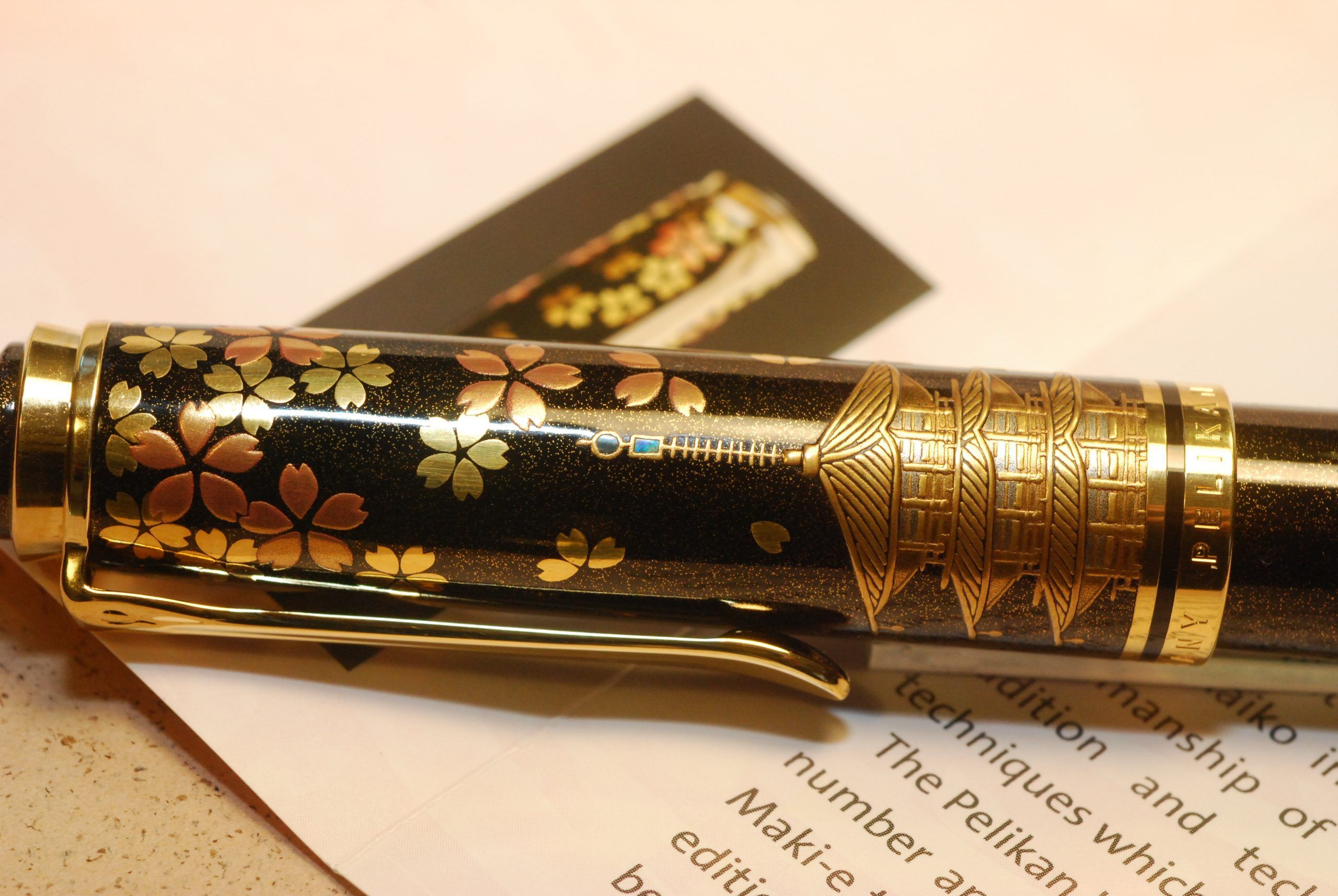
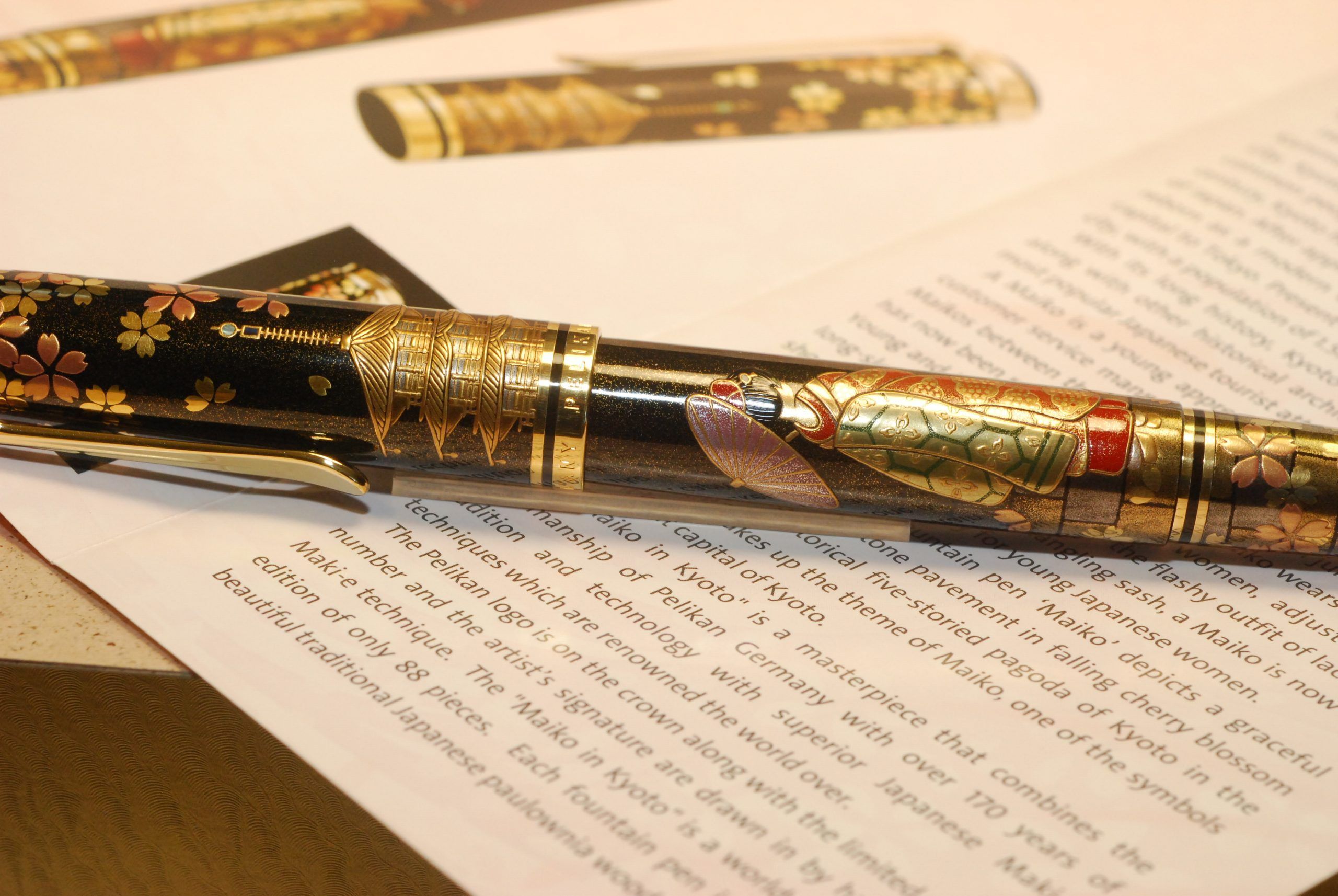
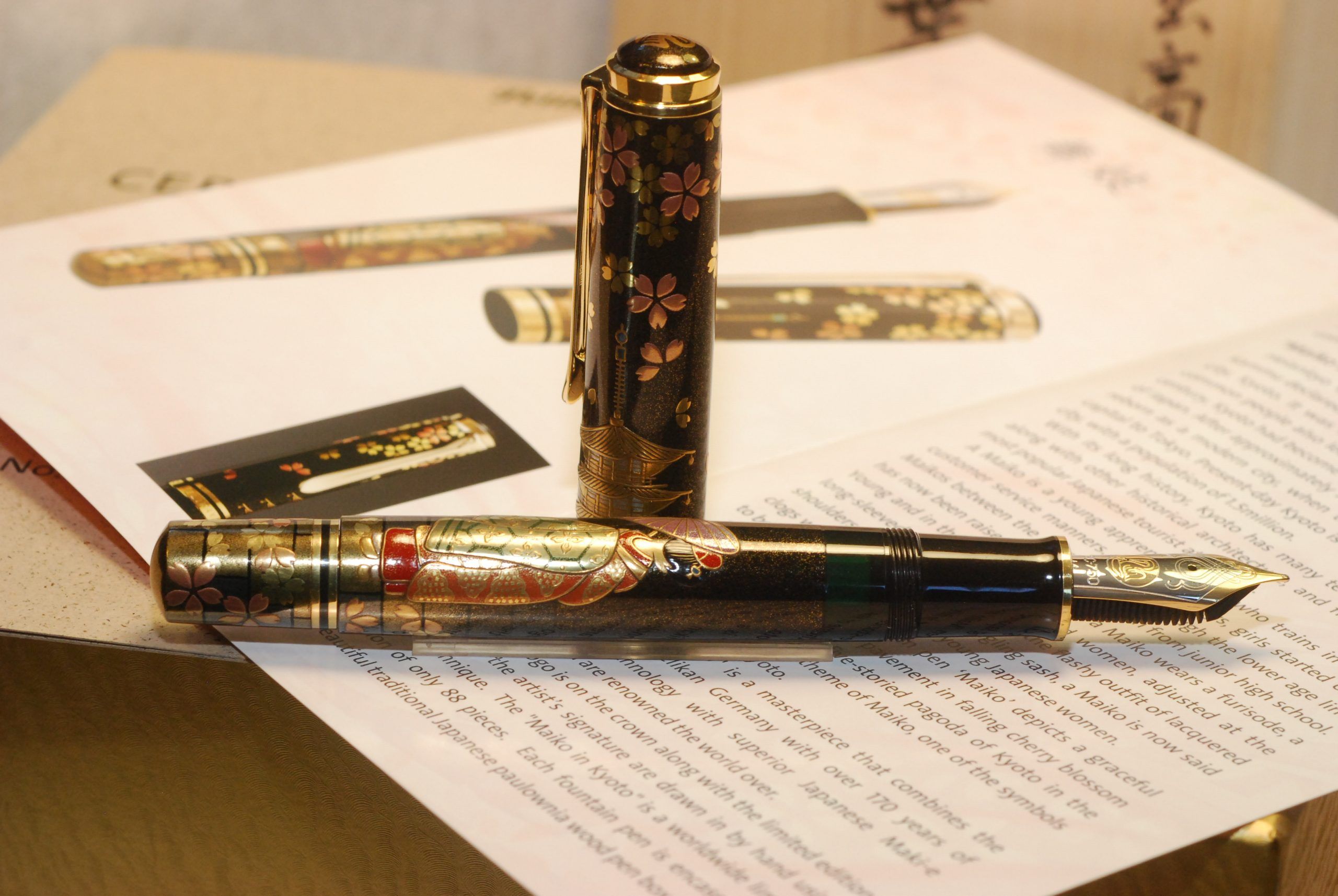
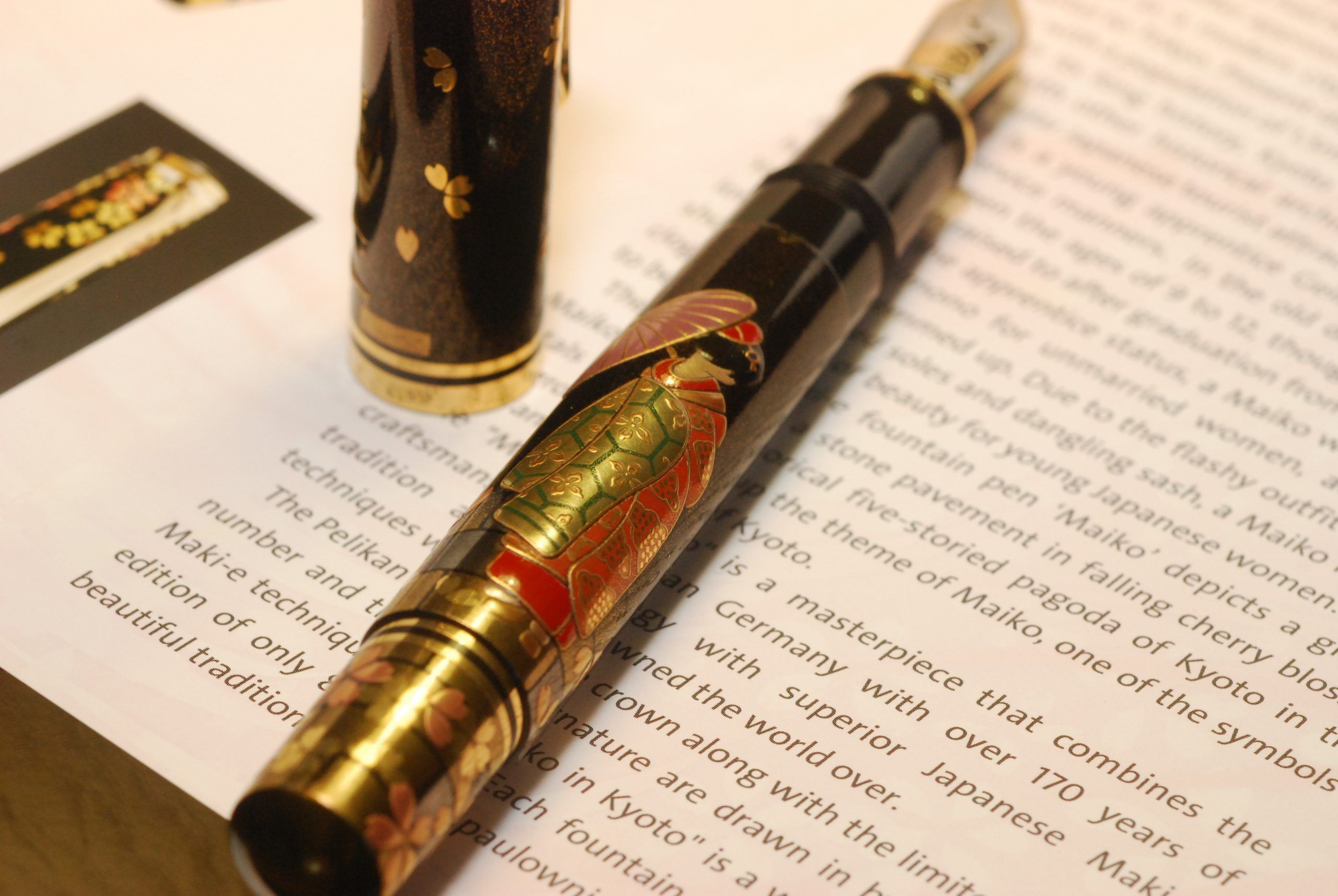
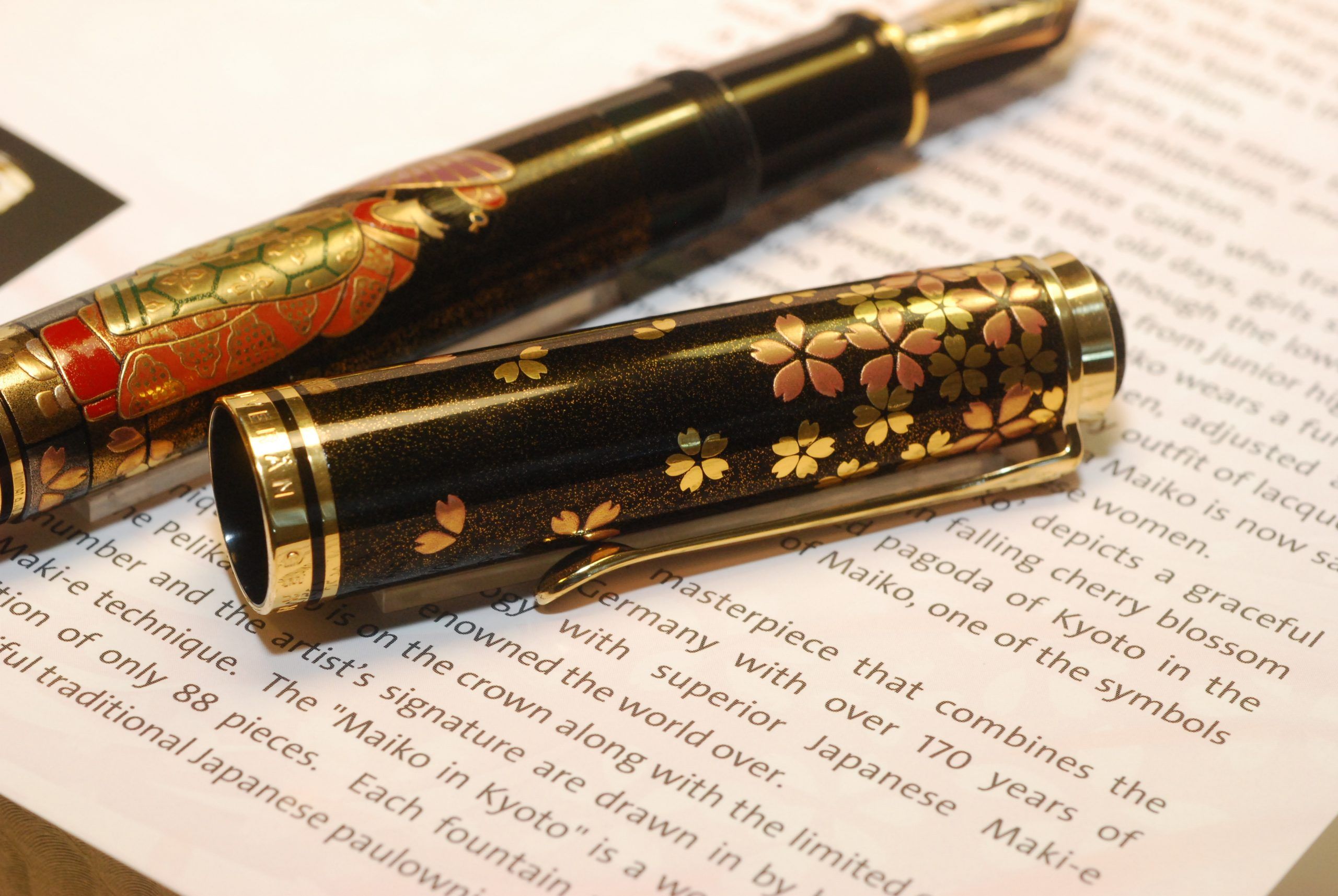
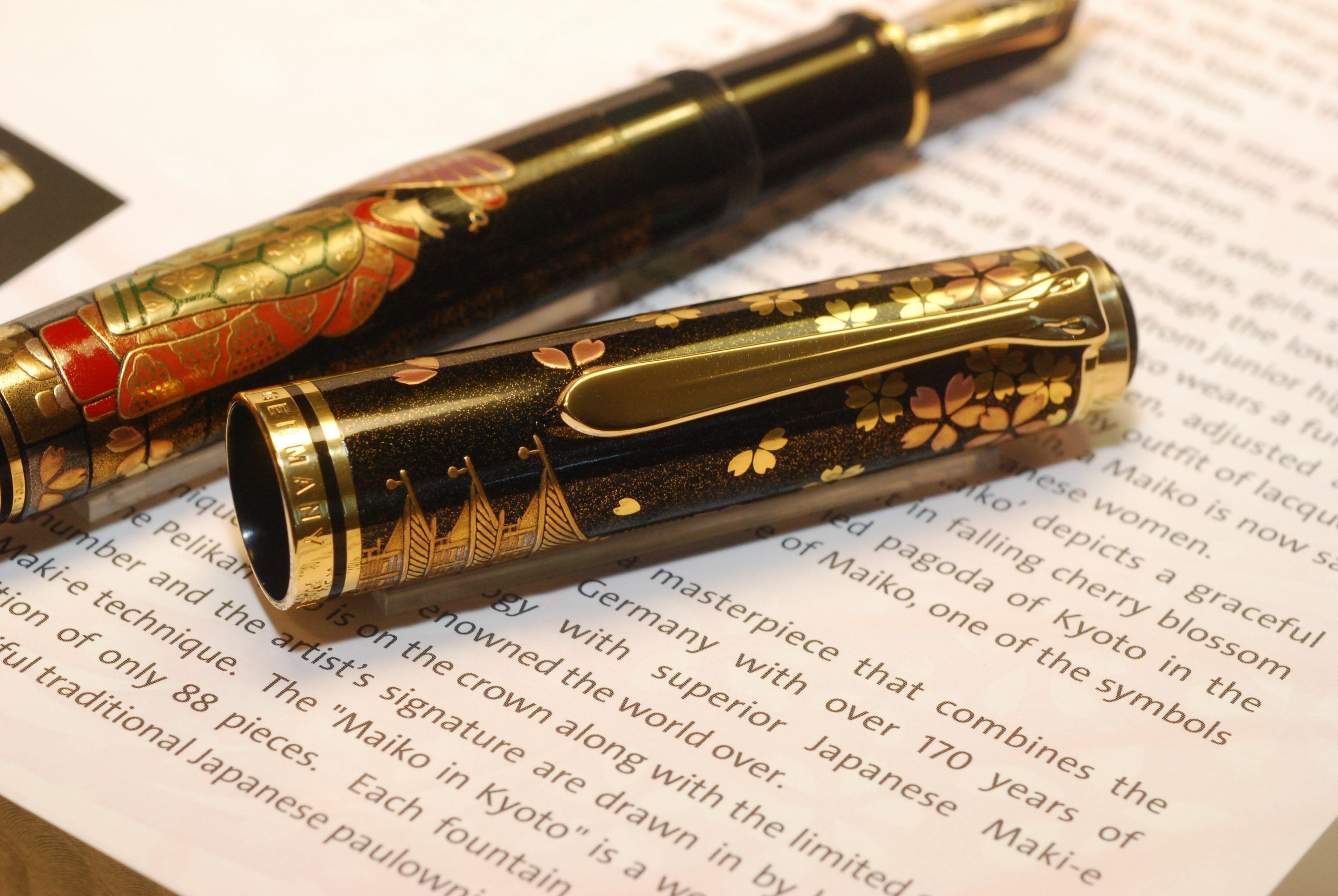
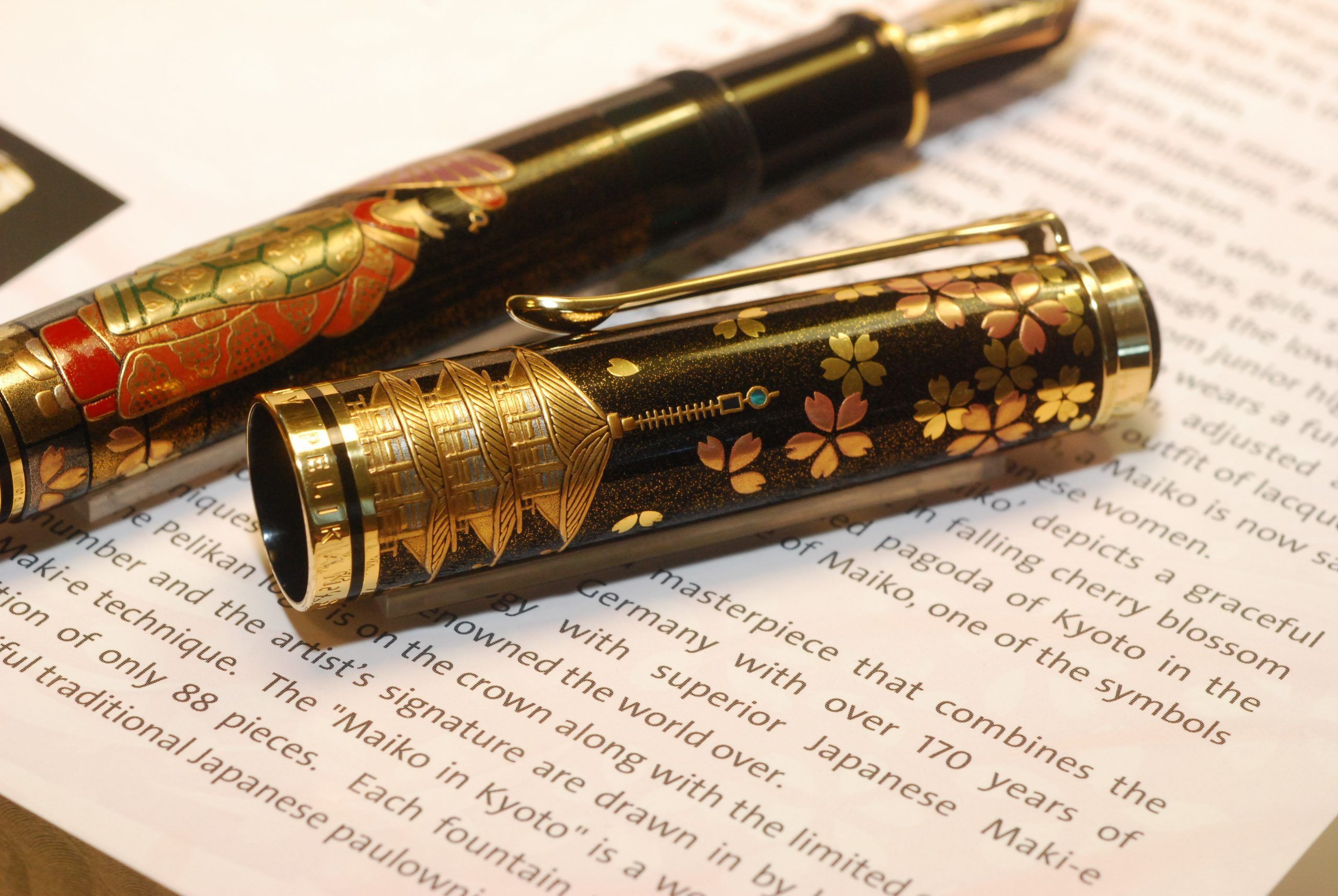







Reviews
There are no reviews yet.